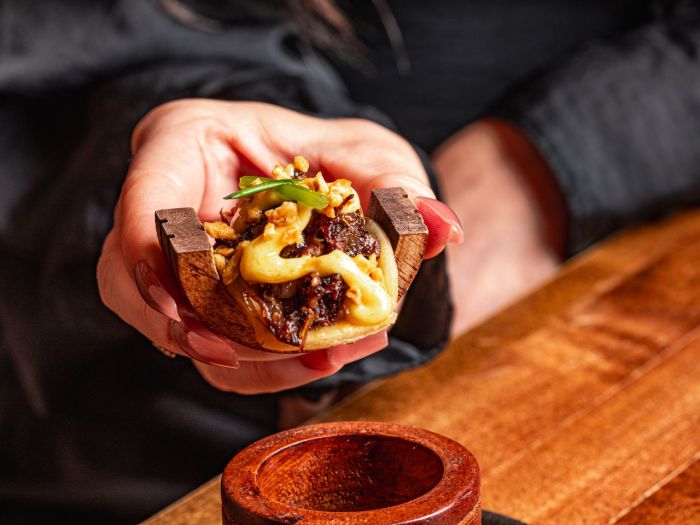Best places in Australia for fall offers a fantastic escape for those seeking autumnal adventures. Experience the vibrant colours of fall foliage, exhilarating outdoor activities, and unique cultural events across diverse Australian landscapes. Discover the perfect time to visit, avoiding crowds and soaking in the best of the season.
From the stunning alpine regions to the coastal escapes, this guide explores the top destinations for a fall getaway. Learn about ideal weather conditions, must-see attractions, and seasonal activities to plan your perfect trip.
Introduction to Australian Fall

Autumn in Australia is a delightful time to visit, offering a blend of pleasant weather, vibrant landscapes, and exciting activities. This season, spanning from March to May in the southern hemisphere, presents a unique opportunity to experience the diverse beauty of the continent. The weather transitions from summer’s warmth to cooler temperatures, creating a perfect atmosphere for outdoor adventures and exploration.The typical weather patterns and seasonal changes vary significantly across Australia’s diverse regions.
While the southern states like Victoria, Tasmania, and South Australia experience a pronounced shift towards cooler temperatures, the northern states and tropical regions generally maintain warm, comfortable conditions, making them ideal for different types of experiences. The intensity of the change in temperature and the presence of fall foliage are more pronounced in the southern regions.
Best Time to Visit for Fall Foliage
Australia’s fall foliage, though not as dramatic as in some other parts of the world, is still a beautiful sight in certain regions. The transition from summer to autumn is marked by a shift in vegetation, with the vibrant greens of spring giving way to a rich tapestry of colors. This transformation is most noticeable in the cooler regions of the country.
Peak Fall Season in Various Locations
- Victoria: Late March to early May typically sees the peak of autumnal beauty in the state’s highlands and mountain ranges, offering scenic drives and hiking opportunities amidst a stunning backdrop. The cooler temperatures create a pleasant atmosphere for outdoor activities.
- Tasmania: April and May often mark the peak fall season in Tasmania, with the island’s diverse landscapes showcasing the changing foliage. This time offers opportunities for exploring national parks and enjoying hiking trails.
- South Australia: Late March to early May is a good time to visit South Australia, particularly for exploring the vineyards and experiencing the cooler weather. The Barossa Valley and McLaren Vale regions are famous for their wines, and the fall season provides a pleasant time for wine tasting tours.
Best Time to Avoid Crowds
Avoiding crowds during your trip is crucial for a more peaceful and immersive experience. While the peak fall season offers the most favorable weather and foliage, it also attracts more tourists. To experience the best of the season with fewer crowds, consider visiting slightly before or after the peak season. This could involve traveling a bit earlier in March or later in May.
Alternatively, consider exploring less-traveled destinations within the peak season to experience the natural beauty without the large crowds. This approach ensures you can appreciate the scenery and the experiences without the stress of large tourist numbers.
Weather Patterns Across Different Australian Regions
| Region | Typical Weather | Fall Foliage |
|---|---|---|
| Southern States (Victoria, Tasmania, South Australia) | Cooler temperatures, with average highs in the mid-60s to low 70s Fahrenheit (mid-10s to high 20s Celsius). Possibility of rain, especially in higher altitudes. | Noticeable change in colors, particularly in the mountain regions and forests. |
| Northern States (Queensland, Northern Territory) | Generally warm and dry, with temperatures remaining in the 70s and 80s Fahrenheit (20s to 30s Celsius). Minimal to no noticeable change in foliage. | Minimal to no visible change in foliage. |
Top Destinations for Fall Adventures: Best Places In Australia For Fall
Autumn in Australia, a season of vibrant colours and crisp air, offers a unique opportunity for exploration. From the picturesque landscapes of the southern highlands to the bustling cities of the east coast, numerous destinations beckon travellers seeking a fall escape. This season provides an ideal blend of outdoor adventures, cultural experiences, and breathtaking scenery.Fall in Australia is a time of transition, marked by the shift from summer’s heat to the cooler temperatures of autumn.
This transition creates a unique atmosphere, with the landscapes transforming and offering diverse activities and attractions for visitors.
Top 5 Fall Destinations
Australia’s fall offers a variety of experiences. To best suit different interests, we’ve compiled a list of five top destinations, each with its own charm.
Australia’s fall foliage is breathtaking, with stunning hikes and vibrant landscapes. But if you’re craving a different adventure, exploring the charming towns and historic cities of France is a must! For a deeper dive into French destinations, check out this helpful guide on first time france where to go and what to do. Regardless of your destination, remember that fall in Australia offers a fantastic escape with its own unique beauty.
- Melbourne: Known for its vibrant cultural scene and impressive architectural heritage, Melbourne is a fantastic destination for fall. The city hosts numerous events and festivals during this time, showcasing its artistic and culinary prowess. The cool weather provides an ideal backdrop for exploring the city’s museums, galleries, and cafes, while the numerous parks and gardens provide opportunities for leisurely walks and picnics.
- Tasmania: This island state is renowned for its stunning natural beauty. Fall offers a breathtaking display of colours in the forests and mountains, making it a paradise for nature lovers. Hiking trails, charming towns, and national parks offer unforgettable experiences. The cooler temperatures make for enjoyable hikes, while the shorter daylight hours encourage more intimate interactions with the surroundings.
- Yarra Valley: The Yarra Valley, nestled in the picturesque hills east of Melbourne, offers a unique fall experience. The region is famed for its wineries, where visitors can indulge in wine tasting and explore the beautiful vineyards. Fall offers an ideal time for wine tasting, as the crisp air enhances the appreciation of the wines.
- Blue Mountains: Famous for their stunning natural beauty, the Blue Mountains are an ideal escape for those seeking breathtaking views. Fall offers pleasant temperatures for exploring the region’s numerous hiking trails and scenic lookouts, while the changing colours of the foliage create a picturesque backdrop.
- Adelaide Hills: This region boasts stunning vineyards and rolling hills, offering a delightful blend of outdoor activities and cultural experiences. Fall brings a charming atmosphere to the region, with opportunities to enjoy wine tasting, exploring the charming towns, and enjoying the cooler temperatures.
Fall Foliage and Outdoor Adventures
The diverse landscapes of Australia provide numerous opportunities for experiencing the beauty of fall foliage. Tasmania and the Blue Mountains, in particular, showcase vibrant colours as the trees transition from summer greens to autumnal hues. Hiking, camping, and exploring national parks are ideal activities for those seeking outdoor adventures during this time.
Cultural Events and Festivals, Best places in australia for fall
Melbourne, in particular, hosts numerous cultural events and festivals during fall. These events showcase the city’s rich artistic and culinary heritage. Many festivals and events are designed to showcase the best of the season’s offerings.
Australia’s fall foliage is spectacular, and finding the perfect spots for your trip is key! For some seriously witty and inspiring fall vacation ideas, check out this amazing resource for trip ideas and Instagram-worthy photos: trip ideas fall vacations witty fall instagram. From the vibrant wineries of the Yarra Valley to the breathtaking coastal hikes of the Great Ocean Road, Australia offers a diverse range of incredible fall destinations.
Comparative Analysis of Destinations
| Destination | Average Temperature (°C) | Average Rainfall (mm) | Average Daylight Hours |
|---|---|---|---|
| Melbourne | 12-18 | 50-70 | 12-13 |
| Tasmania | 8-14 | 70-100 | 11-12 |
| Yarra Valley | 10-16 | 40-60 | 12-13 |
| Blue Mountains | 9-15 | 60-80 | 11-12 |
| Adelaide Hills | 11-17 | 45-65 | 12-13 |
Fall Activities and Experiences
Autumn in Australia brings a spectacular array of experiences, from vibrant colours painting the landscapes to unique cultural celebrations. The crisp air and shorter days create the perfect backdrop for outdoor adventures and exploring the nation’s diverse regions. This period offers a chance to connect with nature, sample seasonal delicacies, and partake in captivating cultural events.
Outdoor Adventures
The fall season provides ideal conditions for various outdoor activities. Hiking trails are at their best, with fewer crowds and pleasant temperatures. Camping under a star-studded sky becomes a truly memorable experience. Wildlife spotting is also enhanced as animals emerge from their summer retreats. The cooler weather makes these activities more enjoyable and less strenuous compared to the peak summer months.
- Hiking: Many popular hiking trails across Australia, including those in the Blue Mountains, the Great Dividing Range, and the Flinders Ranges, are ideal for fall hiking. The trails are less crowded, and the temperatures are comfortable, offering a fantastic experience for hikers of all levels.
- Camping: Australia’s national parks and wilderness areas provide ample opportunities for fall camping. The cooler temperatures and clear skies create an idyllic setting for camping trips, allowing for better visibility of the night sky and wildlife.
- Wildlife Spotting: Fall is a great time to observe wildlife in their natural habitat. Many animals, including kangaroos, koalas, and various bird species, are more active during this time. This offers a unique opportunity to connect with Australia’s diverse wildlife.
Cultural Events and Festivals, Best places in australia for fall
Fall in Australia marks the beginning of a vibrant season of cultural events and festivals. Many regional areas host unique celebrations, showcasing local traditions and crafts. These events are a fantastic way to immerse yourself in the local culture and experience the warmth of Australian communities.
- Regional Festivals: Numerous regional areas across Australia hold unique fall festivals celebrating local produce, traditions, and art. These festivals often include food stalls, live music, and cultural performances, providing a glimpse into the region’s unique identity.
- Seasonal Food Experiences: Fall in Australia is a time for a variety of seasonal produce. Many farmers markets offer locally grown fruits and vegetables, while restaurants feature seasonal menus showcasing the best of autumnal flavours.
Unique Experiences
Fall offers unique opportunities to explore Australia’s diverse regions. Wine tasting tours in the renowned wine regions like the Yarra Valley or Margaret River provide a chance to savour the region’s finest wines. Visiting regional markets offers a taste of local life and a chance to acquire unique souvenirs.
- Wine Tasting: Australia’s renowned wine regions, such as the Yarra Valley, Margaret River, and McLaren Vale, offer delightful wine tasting experiences during the fall. The cooler weather and crisp air enhance the appreciation of the wine’s flavours. Many wineries offer guided tours and tastings, allowing visitors to learn about the winemaking process and appreciate the local wines.
- Regional Markets: Visiting regional markets during the fall is an excellent way to experience local life and find unique souvenirs. Markets often feature locally grown produce, artisan crafts, and live music. This offers a deeper connection with the local culture and a chance to discover unique treasures.
Best Fall Activities by Destination (Estimated Costs)
| Destination | Activities | Estimated Cost (AUD) |
|---|---|---|
| Yarra Valley | Wine tasting, vineyard tours, gourmet meals | $100-$300+ per person |
| Blue Mountains | Hiking, camping, scenic drives, wildlife viewing | $50-$200+ per person |
| Margaret River | Wine tasting, surfing, coastal walks, whale watching | $150-$400+ per person |
| Flinders Ranges | Hiking, camping, stargazing, wildlife viewing | $75-$250+ per person |
Note: Costs are estimates and can vary depending on the specific activities chosen and the time of year.
Accommodation Options for Fall Visitors
Fall in Australia offers a captivating blend of pleasant weather and stunning landscapes, attracting visitors from around the globe. Choosing the right accommodation is crucial to enhance your experience, whether you’re seeking a luxurious getaway or a budget-friendly adventure. Different accommodation types cater to varying needs and preferences, providing unique experiences and levels of comfort.Finding the perfect place to stay is essential to maximizing your fall adventure.
Consider the location’s proximity to attractions, the level of amenities offered, and your budget when making your choice. This allows you to focus on enjoying the sights and activities without worrying about logistical details.
Luxury Accommodation Options
Luxury accommodations in Australia during fall often provide exceptional experiences. These establishments typically boast premium amenities, such as gourmet dining, spas, and private balconies with breathtaking views. Often situated in picturesque locations, they offer a truly immersive experience.
Australia’s autumn colours are simply breathtaking, making it a fantastic time to explore the country. With the recent news that Australia was named the most relaxing vacation destination on earth here’s the article , it’s clear why. From the vibrant wineries of the Yarra Valley to the stunning coastal walks of the Great Ocean Road, there are endless opportunities for relaxation and adventure.
Pack your bags and get ready for a truly unforgettable fall experience in this amazing land!
- Luxury resorts in coastal regions often provide exclusive access to pristine beaches and offer a range of water activities.
- Many offer curated experiences like private picnics, wine tasting, and guided tours, allowing guests to delve deeper into the local culture and beauty.
- Examples include the iconic The Sebel Sydney and Peppers in various locations, known for their exceptional service and luxurious facilities.
Mid-Range Accommodation Options
Mid-range accommodations provide a balance between luxury and budget-friendliness. These establishments often offer comfortable rooms, desirable amenities, and excellent value for money. Their location and facilities cater to a wider range of travelers.
- Mid-range hotels often feature comfortable rooms, convenient locations near attractions, and various amenities like swimming pools and fitness centers.
- They provide a great alternative to luxury resorts without sacrificing comfort and convenience.
- Consider hotels like Rydges, Quest, and Novotel for a balanced mix of service, facilities, and price.
Budget-Friendly Accommodation Options
Budget-friendly accommodations cater to travelers seeking affordable options without compromising comfort. These establishments often prioritize practicality and value.
- Hostels and guesthouses are popular budget-friendly choices, providing a chance to interact with fellow travelers and experience a more local atmosphere.
- Many offer communal areas, kitchens, and laundry facilities, making them ideal for budget-conscious travelers seeking flexibility.
- Examples of reputable hostels and guesthouses include the YHA network and various locally-owned guesthouses.
Comparison of Accommodation Types
The table below provides a comparative overview of different accommodation types in Australia during fall.
| Accommodation Type | Location | Amenities | Prices (approximate) |
|---|---|---|---|
| Luxury Resorts | Often in scenic locations, near major attractions or beaches | Gourmet dining, spas, private balconies, high-end amenities | $300-$1000+ per night |
| Mid-Range Hotels | Central locations, close to attractions and public transport | Swimming pools, fitness centers, comfortable rooms, good service | $150-$300 per night |
| Hostels/Guesthouses | Often in central locations, some with kitchen facilities | Communal areas, kitchens, laundry facilities, often a local atmosphere | $30-$100 per night |
Planning a Fall Trip to Australia
Autumn in Australia offers a delightful escape, with pleasant weather and vibrant landscapes. Planning your trip requires careful consideration of various factors, from visa requirements to budgeting and packing. This section provides a comprehensive guide to help you navigate the process and make the most of your fall adventure.Australia’s diverse landscapes, from bustling cities to tranquil coastal areas, offer an unparalleled experience for visitors during autumn.
Careful planning will ensure a seamless and memorable journey, allowing you to fully immerse yourself in the beauty of this magnificent continent.
Visa Requirements
Obtaining the necessary visa is crucial for entering Australia. The specific requirements depend on your nationality and the duration of your stay. Consult the official Australian Department of Home Affairs website for accurate and up-to-date information on visa categories and application procedures. This ensures you have the correct documentation and avoid potential issues upon arrival.
Travel Options
Australia offers a variety of travel options to suit different preferences and budgets. Flights are generally the most convenient option for reaching various destinations. Domestic flights within Australia connect major cities efficiently, enabling seamless travel between locations. Consider using a combination of flights and train travel for a more immersive experience. This allows for flexibility in your itinerary and the opportunity to explore different regions.
Alternatively, consider road trips, particularly for exploring national parks and scenic routes.
Budget Considerations
Budgeting for a trip to Australia is crucial for a smooth experience. Factors such as accommodation, transportation, food, and activities will influence your overall expenses. Researching prices for accommodation in advance, comparing flight costs, and identifying affordable dining options can help you create a realistic budget. Determine your spending habits and create a budget that accommodates your needs and desires.
Be prepared for potential fluctuations in prices, especially during peak seasons.
Packing Essentials
Packing appropriately is vital for a comfortable and enjoyable trip. The best way to pack is to research the weather conditions for the destinations you plan to visit. Australia’s fall weather can vary significantly across regions. Ensure you pack layers to adapt to potential temperature changes.
- Clothing: Pack versatile clothing items, including comfortable walking shoes, lightweight jackets, sweaters, and t-shirts.
- Accessories: Don’t forget essentials like sunscreen, a hat, sunglasses, and a reusable water bottle.
- Electronics: Pack your phone, charger, camera, and any other essential electronic devices.
- Documents: Carry your passport, visa (if required), flight tickets, and accommodation confirmations.
- Health Supplies: Pack any necessary medications, including any allergies or health conditions you might have.
- Toiletries: Pack toiletries, including shampoo, conditioner, toothpaste, and other personal care items.
Packing Light
Packing light will make your travels smoother and more efficient. Consider packing versatile clothing items that can be mixed and matched. Pack only the essentials and avoid bringing unnecessary items. This can save space and reduce the risk of lost or damaged luggage. Using packing cubes can help organize and compress clothing items, optimizing space.
Staying Safe
Safety is paramount during your travels. Be aware of your surroundings, especially in crowded areas. Inform someone of your itinerary and expected return time. Be mindful of local customs and traditions, and adhere to safety guidelines provided by the Australian government.
Sample Itinerary (10 Days)
| Day | Activity |
|---|---|
| 1 | Arrive in Sydney, check into hotel, explore the city centre. |
| 2 | Visit the Sydney Opera House and Harbour Bridge. |
| 3 | Day trip to the Blue Mountains, hiking and scenic views. |
| 4 | Fly to Melbourne, check into hotel, explore Federation Square. |
| 5 | Visit the Melbourne Museum and Royal Botanic Gardens. |
| 6 | Day trip to Phillip Island, see the koalas and penguins. |
| 7 | Fly to Brisbane, check into hotel, explore South Bank Parklands. |
| 8 | Visit Lone Pine Koala Sanctuary and explore Story Bridge. |
| 9 | Relax on the beaches of Brisbane or explore local markets. |
| 10 | Departure from Brisbane. |
Visual Representation of Fall in Australia
Autumn in Australia, while not marked by vibrant leaf changes like in some other parts of the world, still presents a stunning array of colours and landscapes. The transition from summer’s heat to the crisp air of autumn creates a unique beauty across the diverse regions of this continent. The changing light and temperature also influence the behaviour of wildlife, making it a captivating time to explore.Autumn in Australia is a period of transition, where the warmer days of summer gradually give way to cooler nights and the beautiful display of fall colours.
This transition affects the landscape, wildlife, and overall atmosphere of the various regions.
Typical Landscapes and Scenery
The landscapes of Australia during autumn are characterized by the vibrant hues of the season. The Australian bush, with its diverse flora, showcases a spectrum of colours as the trees and plants shift from summer’s green to autumn’s yellows, oranges, and reds. Coastal regions display a beautiful array of colours as the wildflowers, shrubs, and trees showcase their autumnal hues.
Fall Foliage and Colors
While Australia’s fall foliage doesn’t boast the dramatic colour shifts of temperate forests, the autumnal hues are still quite noticeable. The eucalyptus trees, a prominent feature in many landscapes, display subtle shades of yellow and orange, particularly in the drier regions. In the forests of Tasmania, the native trees and shrubs show a warm, earthy palette. The coastal areas often feature vibrant colours in the wildflowers, adding to the overall beauty of the landscape.
Wildlife Thriving During Fall
Autumn marks a time of preparation for many Australian animals and birds. Kangaroos and wallabies often increase their food intake in preparation for the cooler months. Many bird species, like kookaburras and magpies, are busy with breeding or migrating, while the birds are showing off their autumn plumage. The fall months provide excellent opportunities to observe wildlife in their natural habitats, especially in national parks and reserves.
Visual Representation Table
| Image | Description |
|---|---|
| A vibrant image of eucalyptus trees with golden-yellow and orange leaves in a dry woodland landscape. | The eucalyptus trees, a hallmark of Australian landscapes, display a spectrum of autumnal colours, especially in the drier regions. The warm hues of yellow and orange contrast beautifully with the brown undergrowth and the clear sky. |
| A picture of wildflowers blooming in a coastal area, showcasing a mix of yellows, reds, and oranges. | Coastal areas often feature a burst of autumn colours in the wildflowers. The vibrant hues of the wildflowers, mixed with the backdrop of the ocean and the golden light of the setting sun, create a beautiful autumnal scene. |
| An image of kangaroos grazing in a meadow with autumn-coloured grasses. | Kangaroos, a quintessential Australian animal, are readily visible during autumn. The warm hues of the grasses and the clear sunlight highlight the kangaroos, showcasing the beauty of the autumn landscape. |
| A photograph of a kookaburra perched on a branch of a eucalyptus tree. | Kookaburras, known for their distinctive laughter, are commonly seen during autumn. The autumn colours of the eucalyptus leaves provide a striking backdrop for the kookaburra, adding to the beauty of the scene. |
Ending Remarks

Australia’s fall season offers a tapestry of experiences, from scenic drives and hikes to cultural celebrations and delicious seasonal food. This guide provides a comprehensive overview, enabling you to choose your ideal destinations, activities, and accommodation options. Plan your trip today and discover the magic of fall in the Land Down Under!




